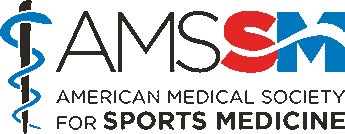 Background Type 2 diabetes is a major public health concern that affects more than 29 million people in the USA and 366 million people worldwide. Type 2 diabetes has a strong association with obesity and is caused by decreased insulin secretion along with insulin resistance. This condition is diagnosed by elevated fasting blood glucose levels or elevated hemoglobin A1c (HbA1c).
Symptoms/Risks Symptoms of this condition can include increased thirst, frequent urination, increased hunger, fatigue and blurred vision. Acute risks include hypoglycemia, diabetic ketoacidosis (DKA) and hyperglycemia. These can present with shaking, sweating, nausea, vomiting, stomach pain, shortness of breath, hyperventilation, confusion, or coma. Chronic risks include vision changes, kidney disease, peripheral neuropathy (such as poor wound healing, numbness, loss of sensation, and pain in hands and/or feet) and cardiovascular disease or stroke.
Sports Medicine Evaluation and Treatment When Type 2 diabetes is suspected, an athlete should visit a physician for diagnosis and management. A sports medicine physician will be knowledgeable about the management of Type 2 diabetes during exercise or competition. Except for diet-controlled type 2 diabetics, close glucose monitoring is recommended before, during and after exercise. Lab tests that may be ordered include blood glucose levels and urinary ketones. Treatment is based on lab results and severity of symptoms. Hyperglycemia is managed with fast-acting insulin administration to lower blood sugar levels. Although only seen in type 2 diabetics taking insulin or sulfonylureas, hypoglycemia is the most concerning risk and requires oral or intravenous glucose replacement.
Injury Prevention A sports medicine physician can help create an individualized diabetic emergency plan. Athletes need to monitor glucose levels and hydrate properly. Type 2 diabetics at risk for hypoglycemia may also require carbohydrate supplementation prior to physical activity. Proper footwear is also important for the prevention of lower extremity skin breakdown and injuries. For Type 2 diabetics, physical activity and exercise has numerous positive effects including improving insulin sensitivity, improving glycemic control, promoting weight loss, decreasing HbA1c and decreasing anti-diabetic medication use.
Return to Play Management should be individualized and is dependent on the individual athlete and sport/exercise. Pre-exercise medical clearance is generally unnecessary for asymptomatic type 2 diabetics prior to beginning low-intensity exercise. Athletes need to avoid exercise if fasting glucose levels are >250 mg/dl with the presence of ketosis, but may be allowed to exercise with close monitoring if fasting glucose levels are >300 mg/dl with no presence of ketosis. Athletes with hypoglycemia should be withheld from participation until the cause of the hypoglycemic episode is identified and managed appropriately. AMSSM Member Authors References Category: [Back] |

